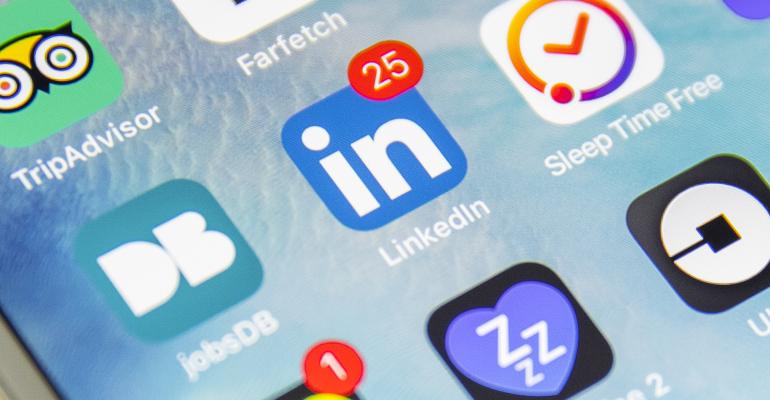Over the past nine months, the digital marketing world has exploded for financial advisors. At Oechsli, we’ve seen the demand firsthand. Advisors are plunging headfirst into social ads, premium content and video marketing.
One prospecting tactic that gets more attention than most is LinkedIn messaging. Essentially, directly messaging prospects. We understand the allure. The concept is direct, trackable and akin to the cold calling of yesteryear. It’s one that can offer immediate gratification when the timing is right.
In this article, we’ll first take a look at whether or not the affluent are receptive to this type of approach and then share some common messaging approaches used by financial advisors.
Are the Affluent Receptive to LinkedIn Messaging?
We asked 403 investors with a minimum of $500,000 whether or not they’d respond to a LinkedIn message from a financial advisor. We also broke the respondents down by age group.

Overall, there is a solid percentage of the affluent who say they’re willing to respond to a LinkedIn message. In reality, we find the response rates to be significantly lower than the numbers shown in the chart, especially when the level of personalization is low or nonexistent. Regardless, it’s clear that the affluent, especially those who are younger, are willing to respond to this approach.
Should You Focus on Volume or Personalization?
There are really only two variables involved, aside from the message itself. The first is volume. Are you planning on sending a handful of messages each month or hundreds? The second is the level of personalization. How much are you planning to customize the message to the prospect?
Here’s a simple visual to illustrate the point.

1. High Volume, High Personalization
In a perfect world, this would be the strategy. When you send out unique and targeted messages to thousands of prospects, you’re sure to find opportunities. The issue? While some advisors can make this a reality, most don’t have the time.
2. High Volume, Low Personalization
High volume can help you succeed, even without the personalization, but there are risks involved with this approach. The most significant of which is the reputational risk of being seen as a spammer in your community. There is also the risk of being flagged by your message recipients as someone they don’t know. When this happens too often, LinkedIn can ban you from their platform. This is becoming more prevalent as LinkedIn tightens restrictions around mass messaging.
3. Low Volume, Low Personalization
If you’re planning on sporadically sending out cold messages, save yourself the time. Dabblers get dabbler results.
4. Low Volume, High Personalization
This method is highly effective and manageable. It focuses on building relationships with prospective clients through a personalized message sequence. It’s about striking up meaningful conversations that are relevant to your prospect and eventually transitioning the social connection to business. Commonality is key here. When you establish that you share contacts, a university affiliation or other things in common, your approach becomes more genuine and effective.
Selecting the Best Method for You
For most advisors, method No. 4 (low volume, high personalization) is an easy place to start. It’s a great way to learn what works for you and what doesn’t. If you’re wanting to take a mass approach, you’ll most likely select option No. 2 and leverage a bot to automate the outreach.

If you’re really looking to get serious, step up to LinkedIn Message Ads. Essentially, you’re paying LinkedIn to deliver messages to a target audience you select through their ad platform. It’s a white-hat solution that delivers the volume, targeting and reporting—without the risks. Essentially, you’re arriving at the same end result (messaging prospects) but in a LinkedIn-approved manner.
Kevin Nichols is a partner with The Oechsli Institute, a firm that specializes in research and training for the financial services industry. @KevinANichols www.oechsli.com





